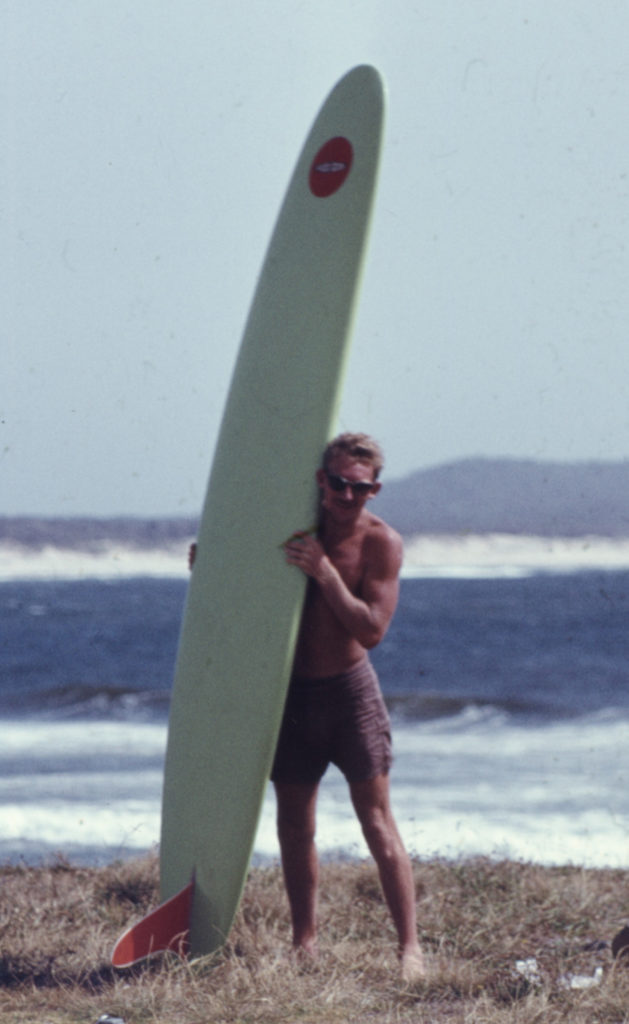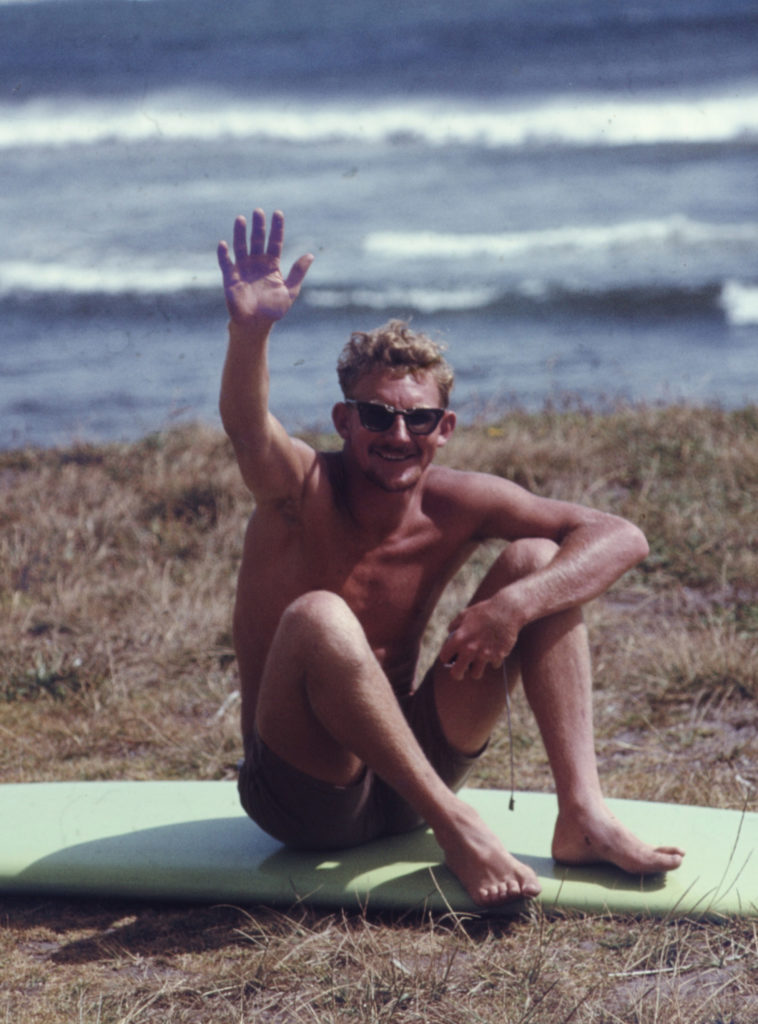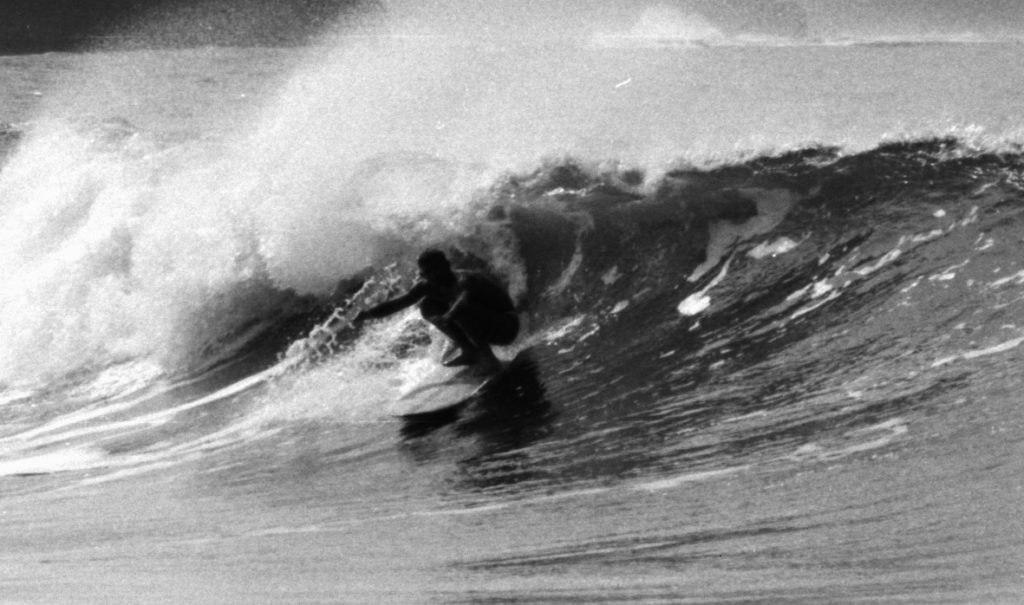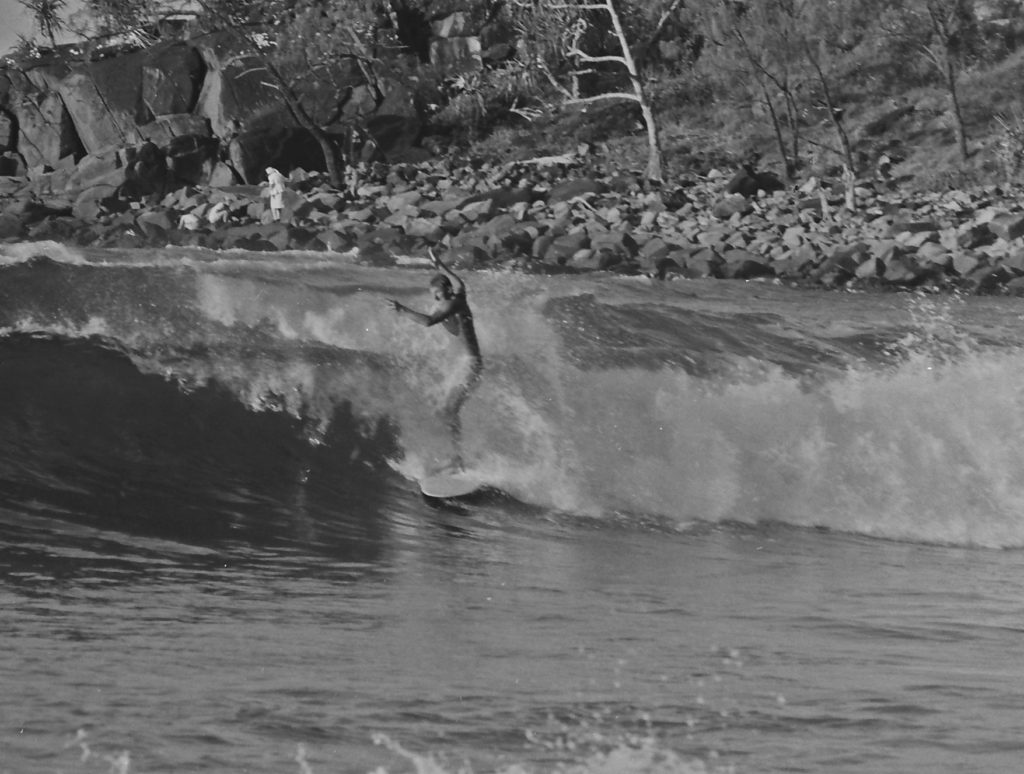Barbarian Days: A Surfing Life by William Finnegan
This book was included in President Obama’s 2016 Summer Reading List
“Barbarian Days is William Finnegan’s memoir of an obsession, a complex enchantment. Surfing only looks like a sport. To initiates, it is something else: a beautiful addiction, a demanding course of study, a morally dangerous pastime, a way of life.
Raised in California and Hawaii, Finnegan started surfing as a child. He has chased waves all over the world, wandering for years through the South Pacific, Australia, Asia, Africa. A bookish boy, and then an excessively adventurous young man, he went on to become a distinguished writer and war reporter. Barbarian Days takes us deep into unfamiliar worlds, some of them right under our noses—off the coasts of New York and San Francisco. It immerses the reader in the edgy camaraderie of close male friendships forged in challenging waves.
Finnegan shares stories of life in a whites-only gang in a tough school in Honolulu. He shows us a world turned upside down for kids and adults alike by the social upheavals of the 1960s. He details the intricacies of famous waves and his own apprenticeships to them. Youthful folly—he drops LSD while riding huge Honolua Bay, on Maui—is served up with rueful humor. As Finnegan’s travels take him ever farther afield, he discovers the picturesque simplicity of a Samoan fishing village, dissects the sexual politics of Tongan interactions with Americans and Japanese, and navigates the Indonesian black market while nearly succumbing to malaria. Throughout, he surfs, carrying readers with him on rides of harrowing, unprecedented lucidity.
Barbarian Days is an old-school adventure story, an intellectual autobiography, a social history, a literary road movie, and an extraordinary exploration of the gradual mastering of an exacting, little-understood art.” ……….. Amazon Books.
@@@@@@@@@@@@@@
In reading this book I recall my early years in Australia. This book is a reminder of the golden years of surfing that was such a significant part of my youth. Australia has the reputation of being the driest continent on the planet and at 59,736 km it also has the sixth longest coastline in the world. While the country’s cultural mythology is dominated by “the Outback” the ocean is the country’s playground. Like most youth living within reach of the Australian coast I grew up in and around the ocean. In my early teen years I learnt to body surf while on summer vacations with my family at East’s Beach just south of Sydney. In my later teen years I started surf board riding at Freshwater Beach in Sydney. That beach is the spiritual home of surf board riding in Australia. When the Hawaiian surfer Duke Kahanamoku visited Australia in December 24, 1914 he gave an exhibition of surf board riding at Freshwater Beach. That was a hell of a Christmas present for Australia.The board that Duke Kahanamoku used for the demonstration was built from a piece of pine purchased from a local hardware store. In my early surfing days at Freshwater Beach the local lads from time to time would haul this massive eight foot / sixty pound surfboard out of storage and try to surf on it. At the time I don’t recall any of the local surfers being all that successful but it did put us in touch with a real slice of history. Over the years the true value of this surfing artifact was recognized and is now under glass in the Freshwater surf club. There is also a statue of Duke Kahanamoku on the Northern headland over looking the beach.
From that time on Australian surfing developed independently from the Hawaiian and Californian influences. That started to change in the 1950s and 1960s when the latest innovations in design and techniques once again reached Australia.
I was part of the generation that was susceptible to the new innovations. My surfboards at the time reflected the early days of this new era. At over nine feet long with a single fin my boards are large compared to the under 7 foot multiple finned “Thrusters” of today.




My surfing life largely coincided with the beginning and end of the 1960s. When I emigrated to Canada my surfing years were behind me and mountain life styles came to dominate my recreational endeavors. From time to time the latest surfing magazines would show up in the local book shops and images of sun light on water would still fill my mind and tickle my consciousness. Like the author of the book postulates, Surfing is an addiction that you never truly leave behind. The book, with it’s stroll down the author’s surfing years, refreshed my memories of many great days, great waves and youthful camaraderie. Admittedly my adventures probably were not of the same magnitude of magnificence as the author’s but while reading the book it was still good to wander through the lands of “what if”, rediscover old stories, old locations and new countries with bigger, better and sometimes scarier surf spots.
@@@@@@@@@@@@@@
Enough about me and more about the book. When we talk about “sport” we are usually talking about team sports with all the hype and hoopla associated with the entertainment industry. So in that sense surfing is not a sport. It is a recreational activity. It has more in common with Skiing, Mountaineering, Kayaking, Canoeing, Hangliding and Rock Climbing than any of the sports we are likely to see on TV. The book is a memoir of William Finnegan’s involvement with surfing and the addictive nature of the activity. For any one who has had even a passing interest in surfing this is a must read book. For others it is a look at “coming of age” experiences and youthful, and not so youthful adventures around the world. There is a distinct lack of jargon and hype that makes it possible for the average reader to get a real feel for the activity known as surfing. For those of us who have lived through any of the surfing eras of the past forty plus years, either as a participant or voyeur, it is a very pleasant reminder of the things we may still miss from those bygone days.
@@@@@@@@@@@@@@
POSTSCRIPT – Reading List
- The Big Drop: Classic Big Wave Surfing Stories. by John Long – “32 classic big wave surfing stories from the sport’s pioneers John Long’s classic collection of big wave surfing stories heralded a new era in surfing literature. Focusing on those elite athletes who live to challenge the ocean’s fury, The Big Drop is more than just another surfing book. It is both an extraordinary collection of thirty-two true tales and a treasure-trove of insight into the evolution of big-wave surfing―with particular focus on the pioneers of the 1950s and 1960s and the skills necessary to challenge huge waves. Providing a comprehensive look at the sport’s eras, locations, and legends, with a host of stunning images and a glossary of surfing terms, it is a truly unforgettable look at the obsession of those who face down monstrous waves. Revealing the tantalizing and terrifying truth about riding big waves, The Big Drop is a must for any surfer inclined to tackle large surf in thought or in fact.” My favorite story in this collection is the one about the “accidental” surfing of a Tidal Wave off the coast of Peru in 1974.
- All for a Few Perfect Waves: The Audacious Life and Legend of Rebel Surfer Miki Dora by David Rensin. “For twenty years, Miki “Da Cat” Dora was the king of Malibu surfers—a dashing, enigmatic rebel who dominated the waves, ruled his peers’ imaginations, and who still inspires the fantasies of wannabes to this day. And yet, Dora railed against surfing’s sudden post-Gidget popularity and the overcrowding of his once empty waves, even after this avid sportsman, iconoclast, and scammer of wide repute ran afoul of the law and led the FBI on a remarkable seven-year chase around the globe in 1974. The New York Times named him “the most renegade spirit the sport has yet to produce” and Vanity Fair called him “a dark prince of the beach.” To fully capture Dora’s never-before-told story, David Rensin spent four years interviewing hundreds of Dora’s friends, enemies, family members, lovers, and fellow surfers to uncover the untold truth about surfing’s most outrageous practitioner, charismatic antihero, committed loner, and enduring mystery.”
- Storm – Stories of Survival from Land and Sea, edited by Clint Willis. “Storm” reveals first-hand accounts of battling with the elements: hurricanes, blizzards, tornadoes and sand storms – in mountains, seas, plains, and jungles. Included are contributions from sailors, climbers, adventures, and other hardy souls; people like Patrick O’Brian, Stephen Venables, Chris Bonnington, Sebastian Junger, Joseph Conrad and Apsley Cherry-Garrard. Full of harrowing adventures that test human endurance, this volume contains stories of individuals who must fight to stay alive. Barry Lopez is trapped among arctic floes by a sudden squall; Art Davidson’s team freezes in a wind storm on Mount McKinley as the temperature hits 48 degrees below zero; an idyllic sail turns tragic when Gordon Chaplin loses his ship and his lover in a South Pacific typhoon. My favorite story in my 2000 edition is Jack London’s THE HOUSE OF MAPUHI, the story of survival during a typhoon on a Polynesian island. Note: my edition appears to be different from the one reviewed and for sale on Amazon.
POSTSCRIPT – Videos
- BUSTIN’ DOWN THE DOOR. There are a “million” surfing movies out there but this is a surfing documentary to end all surfing documentaries. It is lNarrated by Edward Norton and featuring intimate interviews with Shaun Tomson, Rabbit Bartholomew, Mark Richards(MR), Ian Cairns, Peter Townend and Mark Warren, talking of the infamous waves along Oahu’s legendary North Shore which they rode with a style, aggression, and raw courage unseen prior to their arrival. Collectively, these surfers changed the face of surfing and were the first to really apply themselves as serious professional surfers.Packed with beautifully shot footage of these masters at work it tells the truly inspirational tale of how they moved over from Australia and South Africa to pioneer a sport that, at the time, was only seen as a past time for “beach bums”.
However, this is no surfing fairy tale! Enduring incredibly hard times, from confrontations with Da Hui (a group of “locals” in Hawaii dedicated to promoting respect and equality in the lineup) to having contracts put out on their lives, this is a testament to how far these young men were willing to go to make surfing what it is today! Some of the information is not that flattering to some of the participants. The achievements of this group of Australian and South African surfers was a game changer. But there was a price. The arrogance and aggression of the group alienated many of the local Hawaiians - THE ENDLESS SUMMER by Bruce Brown. This is the iconic surf movie of the late 1960s.The Endless Summer was 1966 when filmmaker and narrator Bruce Brown follows two surfers, Mike Hynson and Robert August on a surfing trip around the world. Despite the balmy climate of their native California, cold ocean currents make local beaches inhospitable during the winter. They travel to the coasts of Australia, New Zealand, Tahiti, Hawaii, Senegal, Ghana and South Africa in a quest for new surf spots and introduce locals to the sport. Other important surfers of the time, such as Miki Dora, Phil Edwards and Butch Van Artsdalen also appear in the film. Its title comes from the idea, expressed at both the beginning and end of the film, that if one had enough time and money it would be possible to follow the summer up and down the world (northern to southern hemisphere and back), making it endless. The concept of the film was born through the suggestion of a travel agent to Bruce Brown during the planning stages of the film. The travel agent suggested that the flight from Los Angeles to Cape Town, South Africa and back would cost $50 more than a trip circumnavigating the world. After which, Bruce came up with the idea of following the summer season by traveling up and down the world.The narrative presentation eases from the stiff and formal documentary of the 1950s and early 1960s to a more casual and fun-loving personal style filled with sly humor. The surf rock soundtrack to the film was provided by The Sandals. The “Theme to the Endless Summer” was written by Gaston Georis and John Blakeley of the Sandals. It has become one of the best known film themes in the surf movie genre.]When the movie was first shown, it encouraged many surfers to go abroad, giving birth to the “surf-and-travel” culture, with prizes for finding “uncrowded surf”, meeting new people and riding the perfect wave. It also introduced the sport, which had become popular outside of Hawaii and the Polynesian Islands Islands in places like California and Australia, to a broader audience…….. Wikipedia.The iconography portrayed in the film is not strictly correct. The premise of an endless summer with perfect waves is contrary to the facts. The best waves to surf are generated by storms in the winter months. So to pursue the “perfect wave” one must essentially indulge in an “endless winter” . The biggest and best waves occur in the winter.
- William Finnegan Videos
@@@@@@@@@@@@@@
